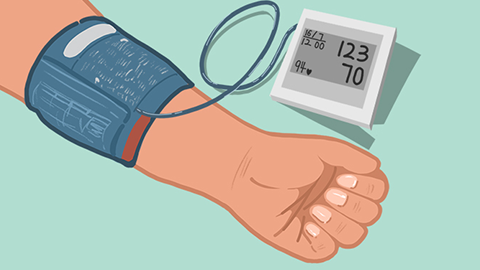What are the common causes of errors in blood pressure measurement?
Common causes of errors in blood pressure measurement include failure to meet pre-measurement requirements, improper cuff size, incorrect measurement posture, inappropriate timing and frequency of measurement, and uncalibrated or malfunctioning sphygmomanometers. If repeated blood pressure readings are abnormal and accompanied by dizziness or chest tightness, prompt medical consultation at a cardiology department is recommended.

1. Failure to meet pre-measurement requirements: Blood pressure may temporarily rise due to vigorous exercise, emotional excitement, smoking, or coffee consumption before measurement, leading to inaccurate results. It is recommended to rest quietly for 5–10 minutes prior to measurement, avoid the above activities, maintain emotional calm, and ensure the body is in a relaxed state before taking measurements.
2. Improper cuff size: A cuff that is too loose may result in falsely elevated readings, while one that is too tight may lead to falsely low readings, failing to reflect true blood pressure. Select a cuff size appropriate for the arm circumference; the cuff bladder width should cover approximately 40% of the upper arm's circumference, and its length should wrap around about one and a half times the arm's circumference.
3. Incorrect measurement posture: Inaccurate results can occur if the back is not properly supported while seated, if the arm is left suspended, or if the wrist is not kept at heart level during wrist blood pressure measurement. When measuring in a seated position, sit upright with your back supported by the chair and place your arm naturally on a table so that it is level with the heart. For wrist measurements, keep the wrist at the same level as the heart.
4. Inappropriate measurement timing and frequency: Measuring only during the day or relying on a single reading fails to capture nighttime blood pressure or fluctuations throughout the day, increasing the risk of error. It is recommended to measure blood pressure once in the morning and once in the evening daily, take 2–3 readings each time and use the average value, and continue this process for 3–7 consecutive days to fully understand blood pressure patterns.
5. Uncalibrated or faulty device: Electronic sphygmomanometers that have not been regularly calibrated, cuffs with air leaks, or mercury sphygmomanometers with broken mercury columns can all produce inaccurate readings. It is advised to calibrate electronic devices annually, check the cuff for damage before use, and regularly inspect the mercury column in mercury sphygmomanometers for proper function.
For daily monitoring, always measure blood pressure at the same time and in the same posture, choose a quiet environment, record each measurement result for physician reference, and strictly follow medical instructions when taking antihypertensive medications—do not adjust medication dosage based on a single erroneous reading.








